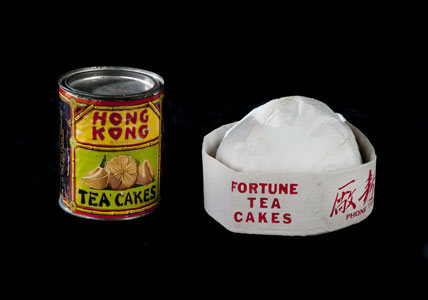About the artifact walls
Artifact walls, consisting of 275 linear feet of glass-fronted cases lining the first and second floor center core, highlight the depth and breadth of the collections and convey that the Museum collects, studies and exhibits objects from our nation's rich and diverse history. The display is part of the special cases within the museum’s Artifact Walls that highlight anniversaries, new acquisitions to the collections and research findings.
About this case
This special case highlights the history of Chinese restaurants and food in America. The development and eventual ubiquity of Chinese restaurants in the United States mirrors the long history of Chinese immigration, exclusion, exoticism and perseverance. From their beginnings as immigrant-only destinations, Chinese restaurants transformed into exotic eating spots, and ultimately became everyday fixtures of American life. Today there are more than 41,000 Chinese restaurants in the United States, and Chinese food has become a frequent and popular choice for American diners. This case shows the diverse range of objects that are part of the museum’s ongoing project to collect items relating to Chinese food in America. They include: a Japanese fortune cookie mold from the Benkyodo Candy Factory in San Francisco ca. 1910, take-out menus, early twentieth century chop sticks, and 1970s neon restaurant signs from New York City.
Collecting intitiative
The Smithsonian’s National Museum of American History seeks to further increase and improve its Chinese American history and culture collections by obtaining objects that document the story of Chinese restaurants and food in America. The development and eventual ubiquity of Chinese restaurants in America mirrors the long history of Chinese immigration, exclusion, exoticism and perseverance. We seek actual objects from or closely related to Chinese restaurants.

Early Chinese immigrants to California used traditional cookware like this wok to prepare meals.

Traditional dining utensils such as these were used by Chinese immigrants instead of Western implements.

"Mr. Egg Roll" Neon Sign, New York City, 1970s

1950s plate and teapot with restaurant logo

